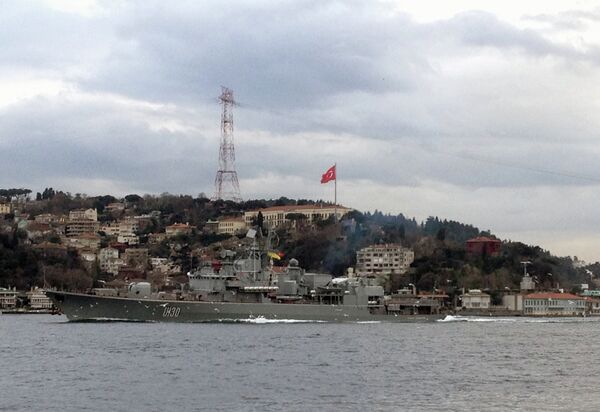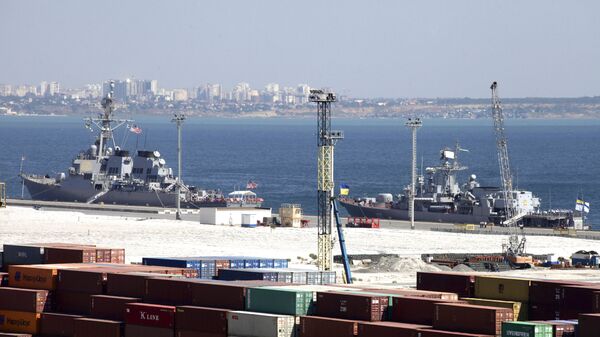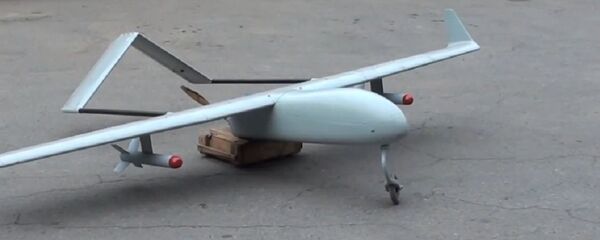Speaking to Ukraine's Channel 5 earlier this week, Vice Admiral Ihor Voronchenko, commander of the Ukrainian Navy, confirmed that Ukraine was negotiating the purchase of decommissioned NATO vessels to reinforce its Black Sea fleet. A group of Ukrainian officials has recently returned from such negotiations, he said.
The senior officer noted that while he could not name the country or countries that Ukraine was negotiating with, he could say that one deal has already been negotiated. A second group of officers will embark for further negotiations this fall, Voronchenko added.
Voronchenko explained that Ukraine needed the ships because it is "a transit state, and we are obliged…to ensure the peaceful navigation of all vessels in the Black Sea. We cannot fulfill the full spectrum of this work with only one minesweeper, the Henichesk, which we obtained."
Accordingly, he said, Kiev is now looking to get another mine-sweeper, and possibly other vessels, from NATO member countries.
Commenting on Voronchenko's remarks, Russian observers suggested that it was a sign of the sorry state of Ukraine's Navy, as well as the country's economic and industrial potential in general. After all, experts noted, less than a quarter century ago, before the collapse of the Soviet Union, Ukraine was home to some of the largest and most advanced shipyards in the world, building everything from small frigates to aircraft carriers. Since 1991, independent Ukraine has built only a handful of small corvettes, anti-submarine vessels and patrol ships.
Furthermore, after the Soviet collapse, much of Ukraine's shipbuilding industry, concentrated in massive shipyards in places like the port city of Mykolaiv in southern Ukraine, remained dependent on cooperation with their Russian counterparts. However, since the downturn in Russian-Ukrainian relations in 2014, cooperation has declined significantly, with Russian shipbuilders turning to domestic producers for things like diesel engines and other advanced components.

Speaking to the Russian news portal Economics Today, Boris Rozhin, editor-in-chief of the information-analytical center Kassad, suggested that Ukraine is looking for the new ships "purely for the sake of showing the flag and a [hypothetical] 'increase in capabilities' of the Navy."
"But buying a decommissioned ship is only half the battle," Rozhin explained. "One also needs to spend money on repairs, fine-tuning and upgrades, on retraining the crew to different standards, on reequipping the ship, and on incorporating it into a single fleet supply system."

Therefore, the expert noted that Voronchenko's announcement seems to be little more than a PR campaign. "Decommissioned ships cannot change the balance of forces in the Black Sea. It's worth recalling that Ukraine has not even been able to put the ships from Sevastopol handed over to them by Russia in order. Ukraine's fleet is financed from the leftovers [of the military budget] – they'll buy a ship, show it off and then leave it docked; but its actual usefulness will be very small."
Earlier this week, Voronchenko accused Russia of "looting" its leftover naval assets in Crimea, and using these vessels as donors for parts. Russia denied the accusations, pointing to the fact that its Black Sea Fleet is being equipped with the latest vessels, and that new parts are being used supply its vessels.
The vast majority of the Ukrainian ships left in Crimea after the peninsula's return to Russia (35 mostly small, mostly auxiliary, mostly obsolete vessels) were returned to Kiev in the summer of 2014 under an agreement between the two countries. The return of the other 16 minor ships was halted when Kiev failed to renew its ceasefire in the civil war in the east and most are now believed to be in storage at bases across the peninsula.
Ukraine's Navy is currently equipped with one frigate, the Hetman Sahaydachniy, commissioned in 1993, one corvette, one landing cutter, and several dozen small patrol and missile boats, minesweepers, command, reconnaissance and support ships.





